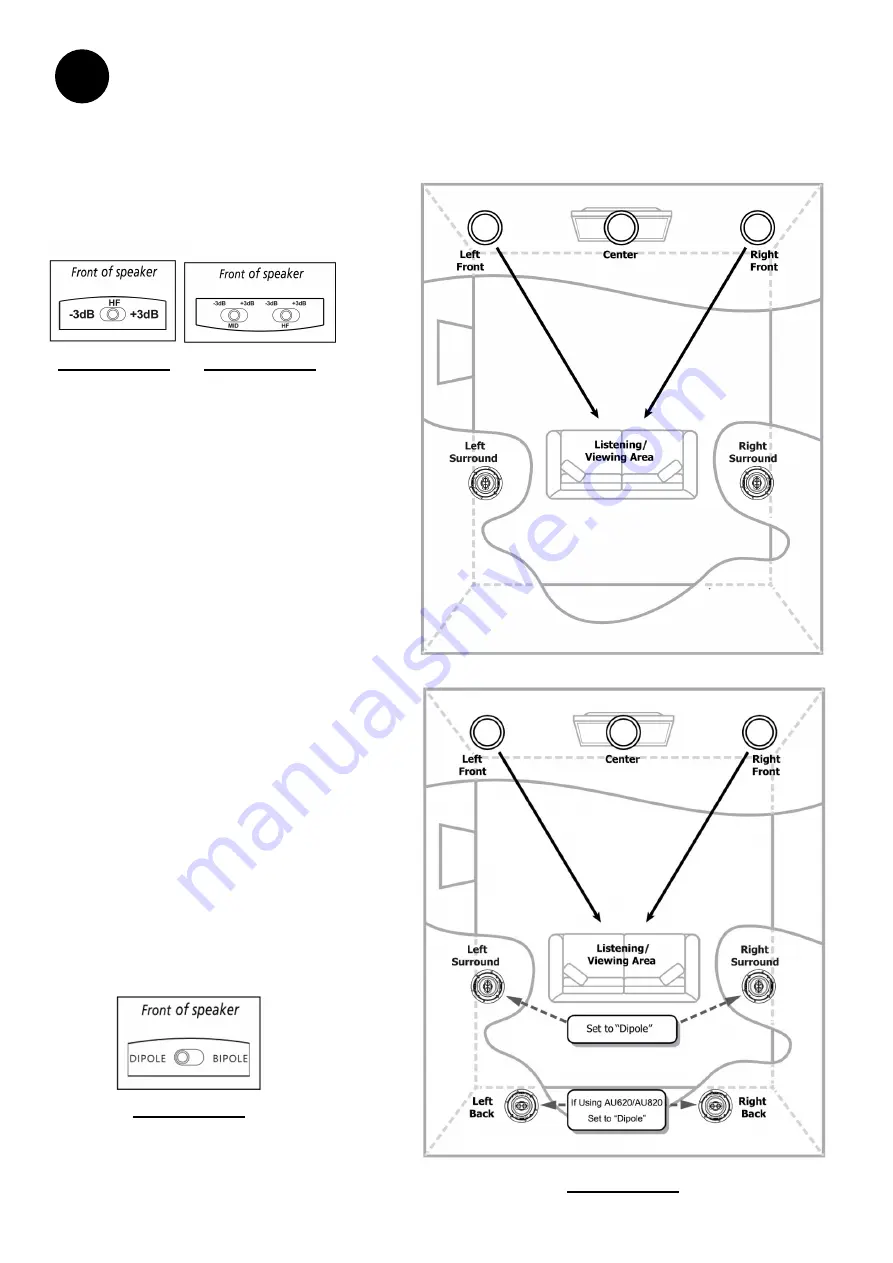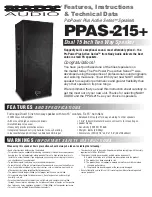
I
This control adjusts the relative level of high
frequency output to compensate for varying
room acoustics or placement behind a screen.
Front Panel Controls
High Frequency Level Control
DRAWING 12
DRAWING 13
"+3dB" is for absorptive, acoustically "dead"
rooms (or when the speaker is behind a movie
screen). Use this position to increase the High
Frequency level and restore the proper sparkle
and liveliness to the sound.
"HF" is for rooms of average absorptive
characteristics.
"-3dB" should be used in rooms that are highly
reflective, with hard floors and exposed
windows.
The setting of the HF control is mostly a matter
of personal taste, so try it in all three positions
and see which one is preferred (see drawing 12
& 13).
This control adjusts the relative level of the
midrange frequency output to compensate for
placement behind a screen.
"MID" delivers the flattest output for placement
behind a perforated screen.
"+3dB" increases the midrange frequency
output slightly.
"-3dB" reduces the midrange frequency output
slightly.
This control can also be used to adjust for
different room acoustics (see drawing 13).
Midrange Frequency Level Control
(AU820 only)
In Dipole mode the AU620/AU820 produce
ambience with minimal localization (best for
most movies and video soundtracks).
In Bipole mode they produce more localizable
sound (preferred for some music recordings).
Dipole/Bipole Operation of AU620 and
AU820 Speaker
DRAWING 14
Switching between Dipole and Bipole mode is
easily accomplished using a slide switch
located on the front of the speaker. Please note
that the vast majority of the time in movies and
TV broadcasts the surround speakers are called upon to reproduce the
environmental sounds that are used as cues to help get you immersed in the
scene on the screen. Once the surround speakers are properly positioned in the
listening area, we recommend that you begin with the dipole mode, as this usually
delivers the most involving and believable surround performance in most situations
(see drawing 14).
Home Theater (5.1channel) layout
Home Theater (7.1channel) layout
DRAWING 15
7






























